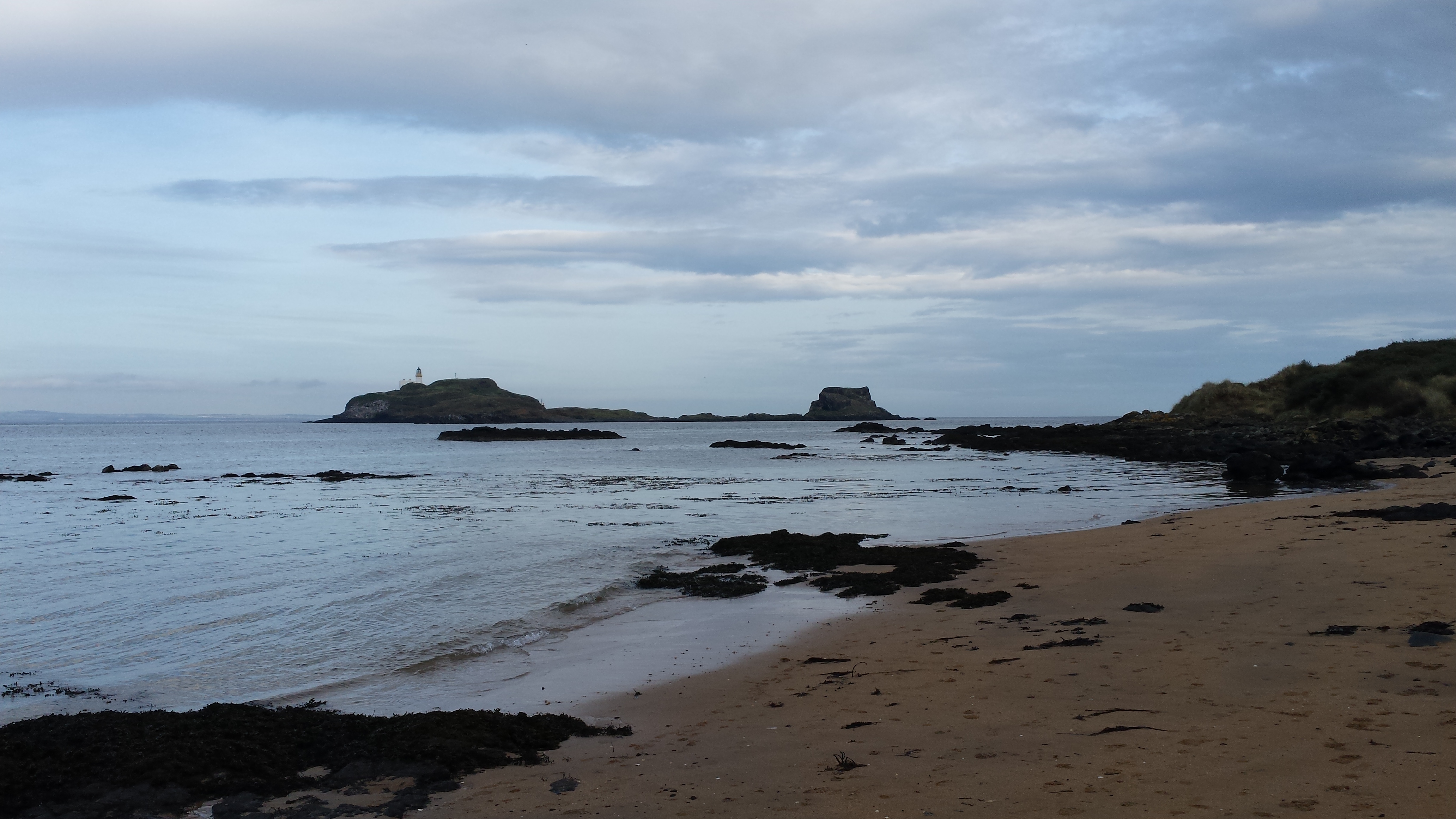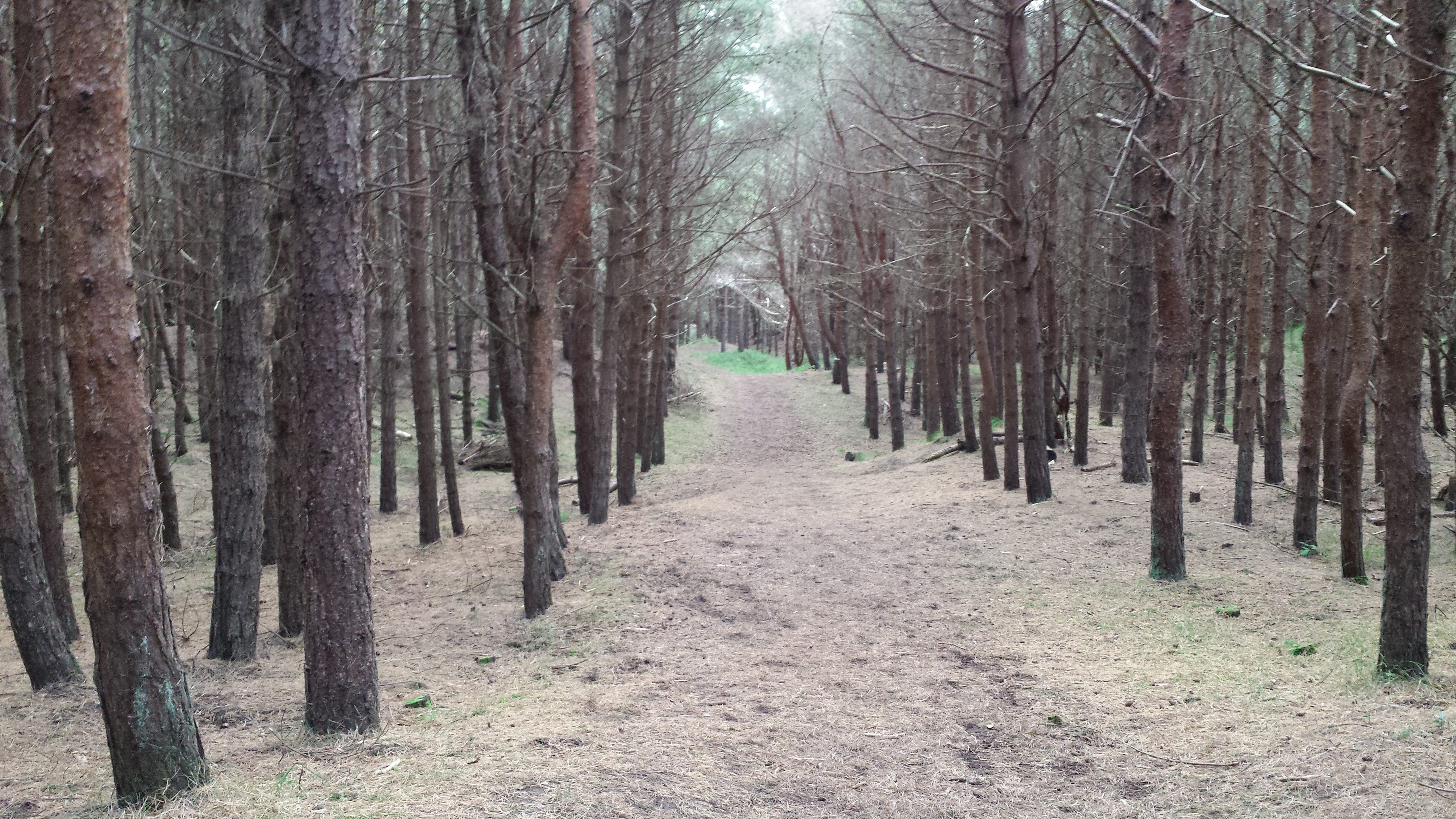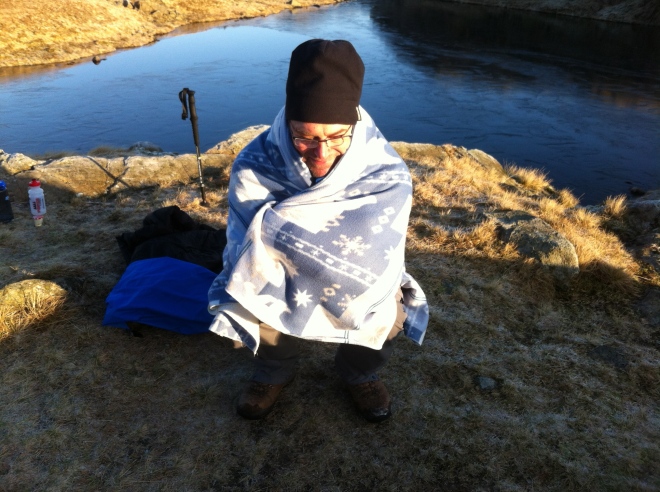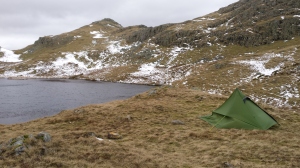The TGO Challenge is a self-supported coast-to-coast backpacking walk across Scotland. Established in 1980, it has earned a unique reputation in the UK’s long-distance walking and backpacking tradition. Over 400 backpackers apply every year from around the world, with more than 350 completing what is now considered one of the toughest challenge events in the calendar. This year is its 40th anniversary.
The first three days…
Friday 10 May
Torridon Youth Hostel to Gerry’s Bothy at Craig
We start this year’s Challenge in Torridon, a part of the west coast in the Highlands of Scotland I had never been to before. It’s stunning. The vastness of the landscape, the towering mountains and sheer beauty defy belief. I live and work in the English Lake District World Heritage Site and even though its beauty surpasses many areas of the UK, this is, quite literally, on a different scale.
Our group of four, Tim and Heather, Dave and I, emerge somewhat bleary-eyed from the full day’s travel the day before into crisp air and sunshine. The mountain forecast posted in the hostel warns of changeable weather. Scotland’s traditional four seasons in a day looks very likely. We sign out in the usual TGO manner and, after a short walk, dip our toes in the bay and each collects a pebble to carry to the east coast at St Cyrus – our chosen finish point this year.
 The very well appointed Torridon Youth Hostel.
The very well appointed Torridon Youth Hostel.
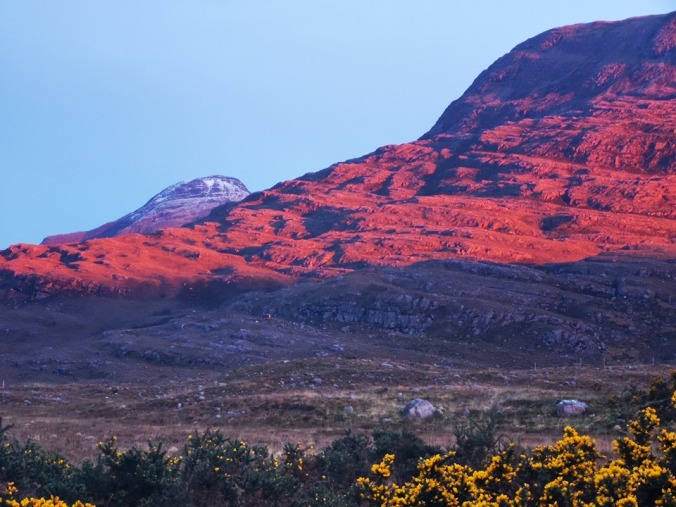 Sunset on the mountain we will be walking tomorrow. Photo: Dave Glenn Hewitt
Sunset on the mountain we will be walking tomorrow. Photo: Dave Glenn Hewitt
 The bay at Torridon where we dip our feet and collect our pebbles.
The bay at Torridon where we dip our feet and collect our pebbles.
 Dave Glenn Hewitt with far too much adrenaline.
Dave Glenn Hewitt with far too much adrenaline.
Our walk takes us south to Annat – a confusing moment for my wife, Alex, who, for the first time, is tracking me on a Garmin InReach attached to my pack. A text message received later, says: “I thought you were going east to Montrose, not south back to Cockermouth!”
The first day of any long-distance trek is usually the hardest. And it takes a few days to get hill fit. The mind is constantly playing tricks, providing you with every plausible excuse to turn back and order a taxi home. Your pack is the heaviest it will be on the whole trip with, in our case, five days’ of food and fuel to take us to our first re-supply at Auchnahillin, east of Inverness. A reassuring thought is that it will be lighter every day until that point. I try telling my legs that, but it’s not working!
I am not an ultralight backpacker by any means but I do consider myself in the lightweight category. My pack is lighter than last year at 23 pounds, or a little over 10 kilos, with 2.5 kilos of that being food and fuel. So, for those interested, that’s a base-weight of 7.5 kilos or 16 pounds. Any long-distance walker will tell you that as your body tires, your pack gets heavier. Of course, it doesn’t but your mind thinks so. However, the Silverback 55 rucksack I’m carrying this year as part of a review for the company, Gossamer Gear – kindly sent to me for that purpose – is a comfortable weight and carries really well. (Review to follow shortly.)
 Gossamer Gear Silverback 55 and Altra Lone Peak 4 trail shoes ready to go.
Gossamer Gear Silverback 55 and Altra Lone Peak 4 trail shoes ready to go.
Our first climb begins after a mile or so of road walking, where we turn east (my wife will be so pleased) passing by burns and lochs on a well-trod mountain path. After a steep climb over and around the Stuc a’ Choire Ghrannda, we stop to catch our breath and, while admiring the spectacular view, we meet an Australian walking the Cape Wrath Trail who very kindly takes a photo for us. He is walking with a Belgian ultralighter who raced passed us moments earlier carrying little more than a daysack. Not sure how that partnership works but, hey, what do I know?

Alongside me, on the right – Dave Glenn Hewitt, Heather Jackson Brooks and Tim Jayes, with the spectacular Torridon Hills in the background.
Out first rest and brew stop comes just ahead of a sudden temperature change and a shower of sleet and snow. Perfect timing. Twenty minutes later, we pick up the climb again and within minutes are sweating in our waterproofs, as the clouds move away leaving us bathed in sunshine for the descent into the corrie to the flat valley floor. I love Scotland!


We continue down to Auchnashellach Station through the shade of a beautiful wooded area – a relief from the sunshine now on our backs – and, after some rather tedious and unavoidable road walking, we arrive at Gerry’s Bothy. There is no camping allowed now in the hostel grounds, so we decide to continue on for another 2 kilometres to pitch in the tranquillity of a forest nearby. At least the mileage will be a little shorter tomorrow.
Distance: 25km
Time: 9hrs 28mins
Total ascent: 1030m
Max elevation: 659m
Saturday 11 May
Gerry’s Bothy area to pitch near Scardroy Lodge
After a chilly night under clear skies, we wake to frost on the tents. We have all rehearsed this many times in the run-up to any long-distance section hike, but it takes a few days to organise yourself into the morning routine. Eventually, with breakfast done and bags packed, we set off, once again in beautiful sunshine with the smell of pine in our nostrils from the logging nearby.
Willie Todd, who joined us in the shared taxi from Inverness, and was pitched in the wood when we arrived, makes his farewells and peels off on his chosen route as we continue upwards once again through the Achnashellach Forest, a steady climb on a landrover track with amazing views back to the Torridon mountain range.
Along the path, we meet up with Kate Kowalska, another of the taxi companions from Inverness. Her fitness belies her age – let’s just say her bus pass is rather dog-eared.

 Logging operations and looking back to the Torridon mountains. Seems a long way now.
Logging operations and looking back to the Torridon mountains. Seems a long way now.
Our first stop of the day is at Glenuaig Lodge, now a holiday home, with a small shelter next to. A welcome rest stop as the intermittent showers and sunshine continue for most of the morning.
All these strategically placed huts and bothies serve to protect and shelter the traveller from the elements. In winter, the temperatures can be well below zero and, even in the corries and glens, whiteouts, driving rain and gales are common.


 Glenuaig Shelter, Scardroy. A welcome rest for us all including Kate and Heather.
Glenuaig Shelter, Scardroy. A welcome rest for us all including Kate and Heather.
Bearing information is on most huts and shelters. Photos 2 and 3: Dave Glenn Hewitt
Kate leaves us after about a mile, then seems to disappear without a trace. Eventually, we spot her and, reassured, continue on through Gleann Fhiodhaid following the intermittent path along the River Meig. This area requires the crossing of many fords and gullies. It’s trickier for me as this year as I am wearing Altra Lone Peak 4 trail shoes instead of boots. I will later find this was the best kit decision I ever made.
Nearing the end of our day, the house at Corrievuic comes into view as we walk the estate road. We had intended to finish a little further along at Scardroy Lodge, at the head of Loch Beannacharain, but the open grass area near the river close to the house is just too inviting – and we stop for the night.
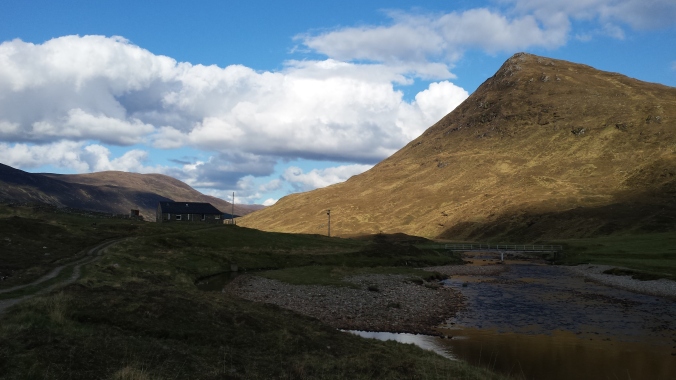
 My Tarptent Notch, Dave’s Hilleberg Akto and Tim and Heather’s MSR Hubba Hubba
My Tarptent Notch, Dave’s Hilleberg Akto and Tim and Heather’s MSR Hubba Hubba
Distance: 22km
Time: 7hrs 37mins
Total ascent: 633m
Max elevation: 343m
Sunday 12 May
Scardroy to Hydro Bothy near Orrin Reservoir
After a pleasant start through the Scardroy estate on the scenic path along Loch Beannacharain, we find ourselves on a frustrating bog-trotting trek to our eventual destination. Digital mapping is fine coupled with paper maps and compass (we always carry both) but when you arrive at the Orrin Reservoir – to find it’s gone – it can be a little confusing even for experienced walkers who know what they are doing. Apparently, the reservoir was drained some years ago, yet it’s still shown on the OS map.
Up to that point, our walk is amazing. Loch Beannacharain is beautiful. Crystal clear with fish jumping, with the mountains and clouds reflecting in its glass-like surface.
A photographer’s dream. We pass by the spectacular Scardroy Lodge with its clipped lawns and ornamental gardens, including a GPS controlled lawnmower, which we watch track up and down with amusement, at one point referring to it as ‘Knight Rider’. Further on as we climb away from the loch, we see a herd of deer watching us from afar, several stags standing proudly nearby. We spot many herds of deer and solitary stags on our journey and we soon almost felt the scenery is incomplete without them.
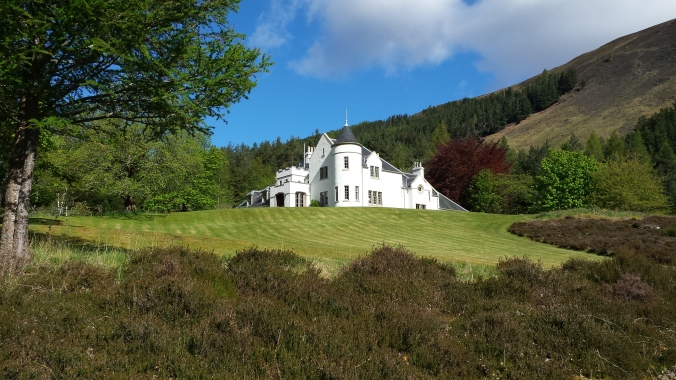
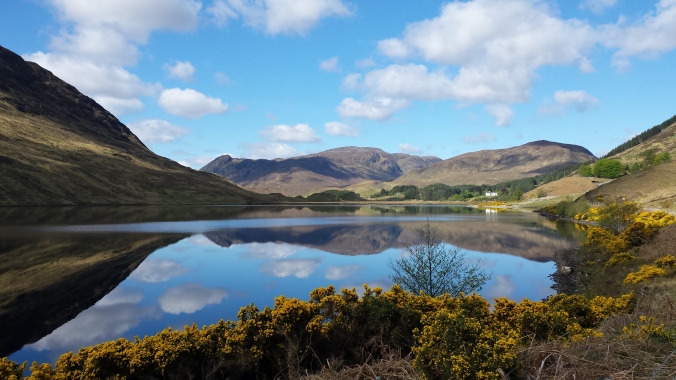


Today is the hottest so far. Could this be a repeat of 2018 with its nine consecutive days of crazy temperatures? We wait to find out. Just beyond Carnoch, we cross the River Mieg south to Inverchoran into the cool shade of Blarnabee Forest. However, the steep climb to the top proves worthy of our first, much needed, stop of the day.
After 4km we arrive at the bothy at Luipmaldrig, once again turning south crossing the River Orrin at the suspension footbridge to continue along the pipeline path towards the Orrin Reservoir. If you have never encountered a cable footbridge, you should know two things. First, they move up and down and side to side – all at the same time. Second, they are very narrow with just a 12-inch wooden boardwalk to step on with a sheer drop either side to the waters and rocks below. We each gingerly made our way across with videos taken to prove our skill and courage, all worthy of a certain Special Forces TV programme.

Then it begins… From the footbridge and for what turns out to be the next 5km, the path vanishes. Our instincts tell us all to follow the south side of the river walking east to the head of the Orrin Reservoir – which incidentally, we couldn’t see at that point. Sound planning you might think. Or not? Occasionally, the path reappears for 50 metres, then disappears again. We all agree that as long as we keep bushwacking through the heather and gorse heading east, we will eventually pick up the pipeline track to our destination at the hydro bothy.
We decide to walk on the shoreline of what we think is the river. It isn’t – it was the Orrin Reservoir – which had been drained, we eventually realise, for the construction of the hydro. It is like the final scene from Planet of the Apes as we turn the corner to be greeted with a desolate landscape of white stumps of long-submerged trees, smooth boulders, dry cracked mud with the fine re-growth of vegetation. A quick look at our digital GPS mapping shows us walking through water. Surreal.

Finally, we pick up the pipeline track and head to the Hydro bothy. On arrival, quite late in the day, we are greeted by two bikepackers who arrive almost as we do and inside is Bert Hendrikse, a Dutch TGO Legend on his 19th crossing. We pitch outside, as all we care about by that time is food and sleep.
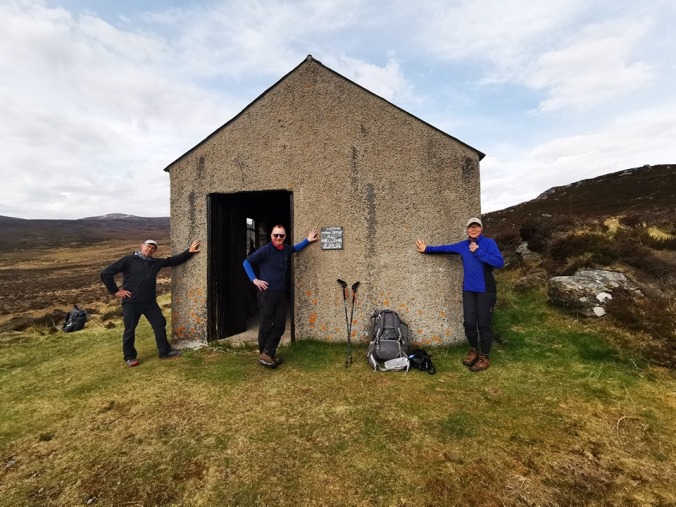
Distance: 24km
Time: 8hrs 48mins
Total ascent: 794m
Max elevation: 438m
















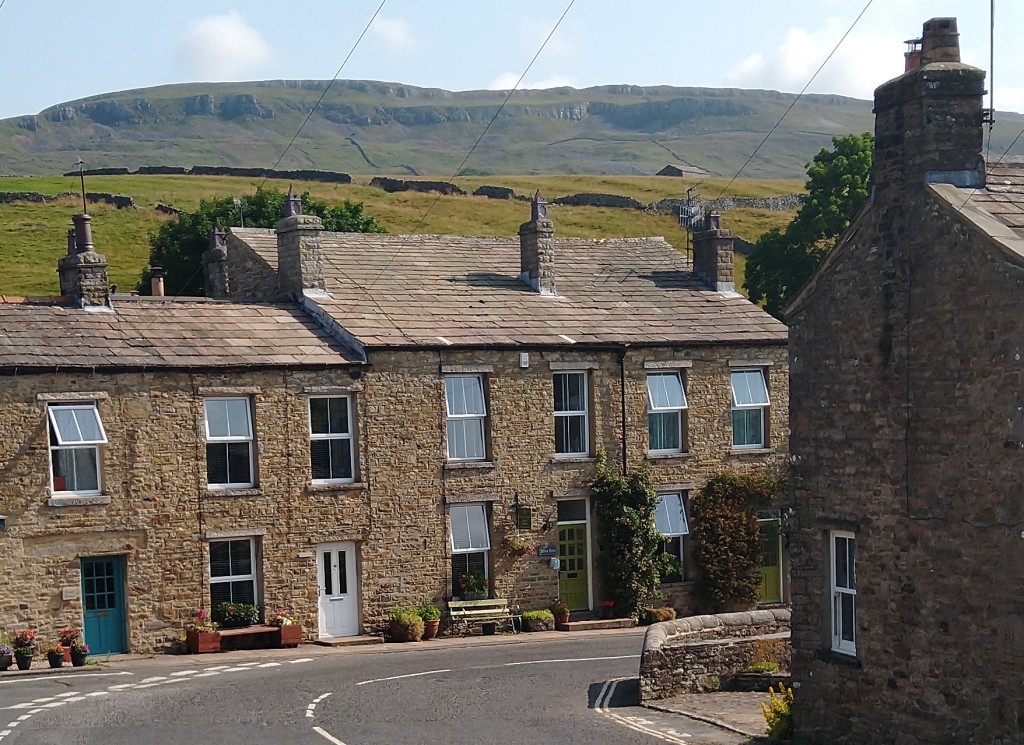


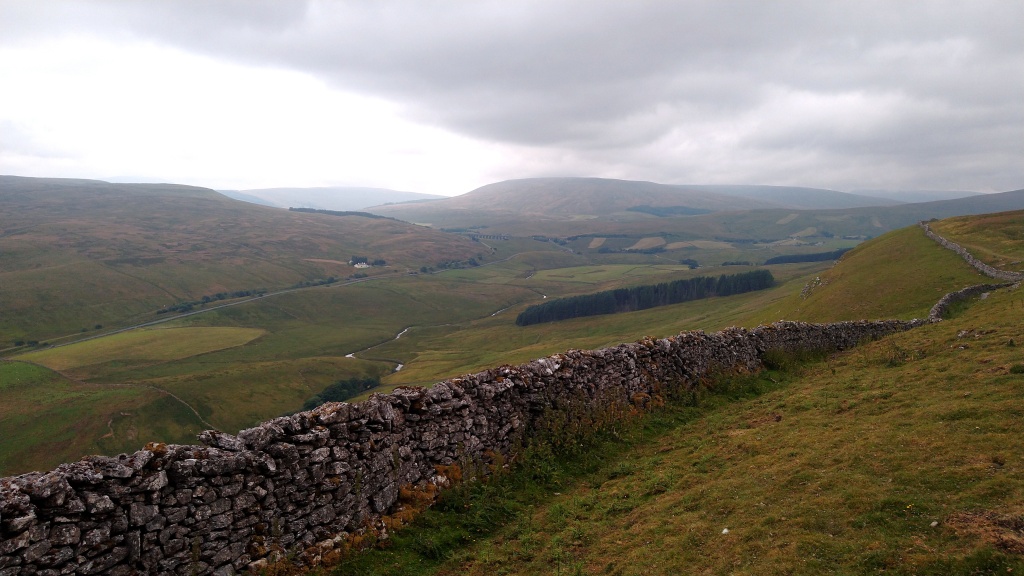




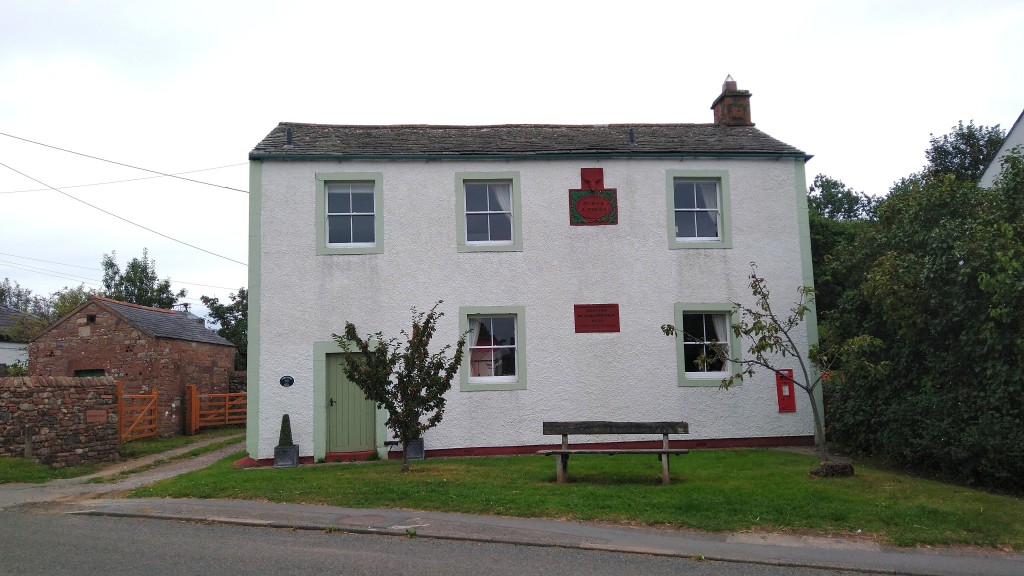



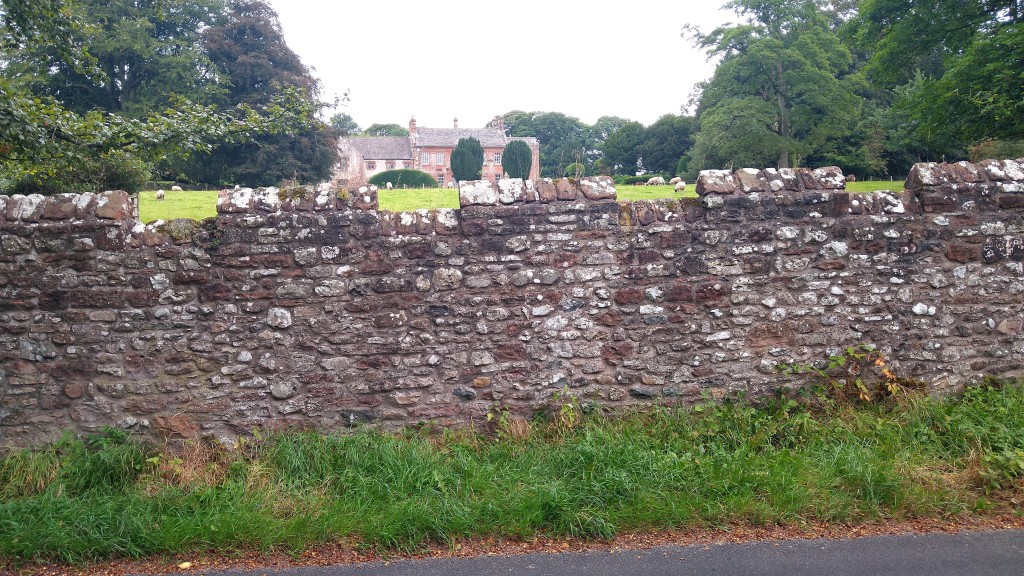




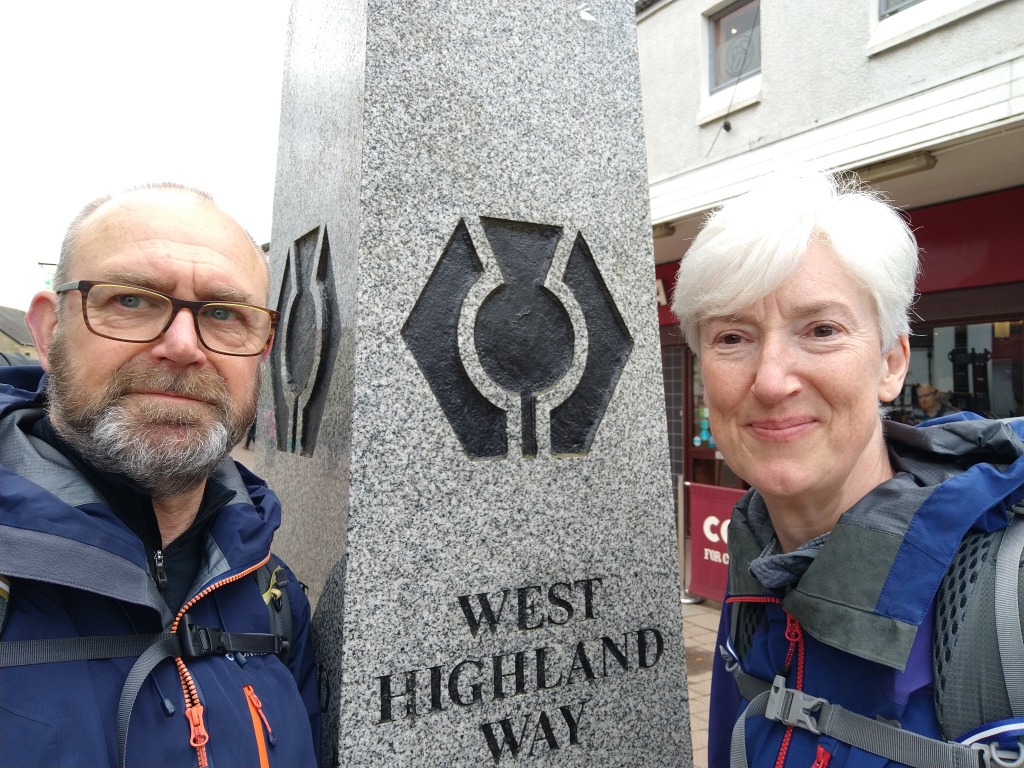










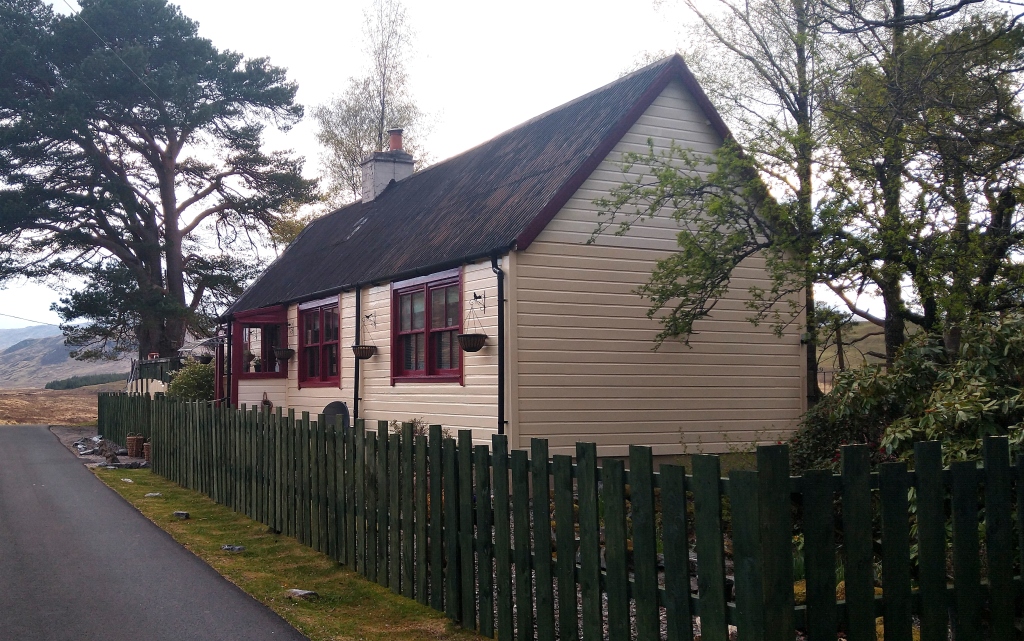




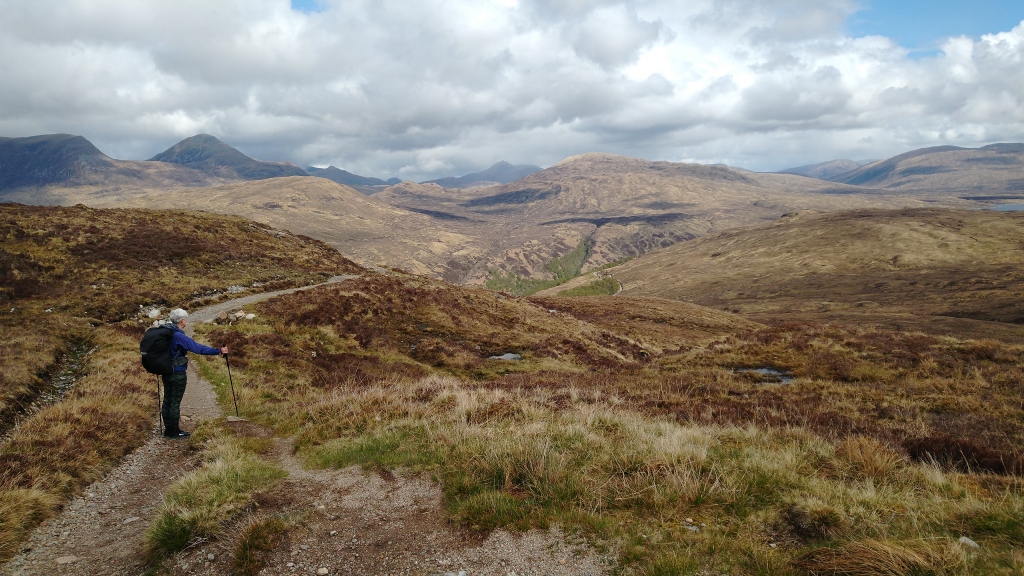











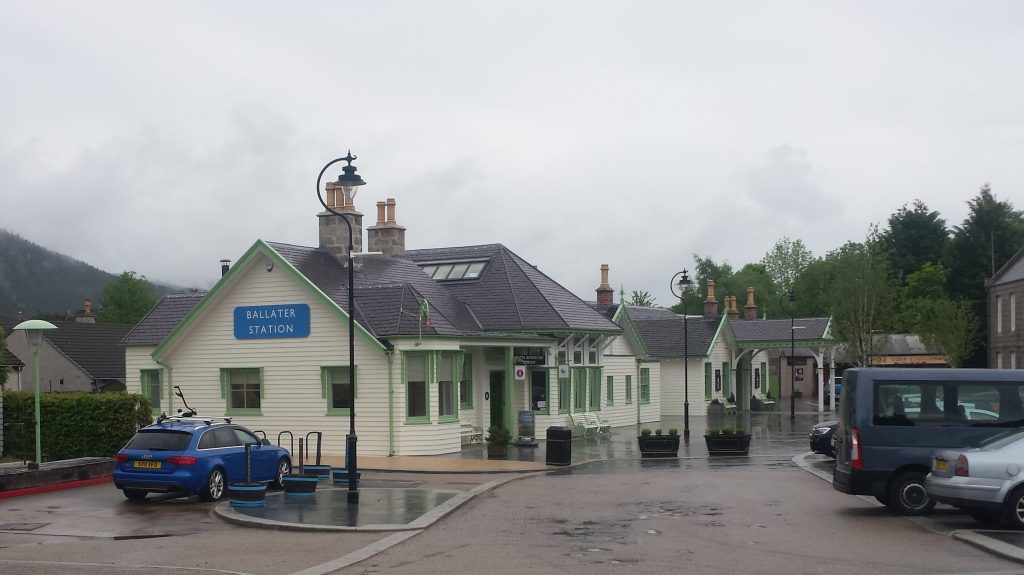




































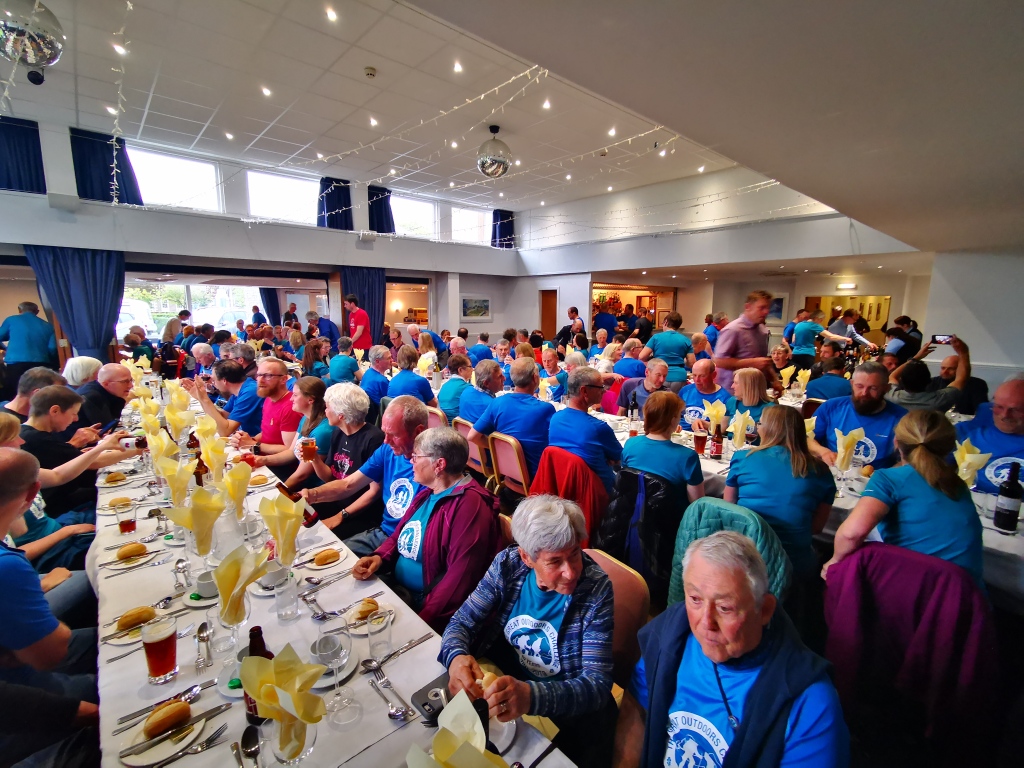




















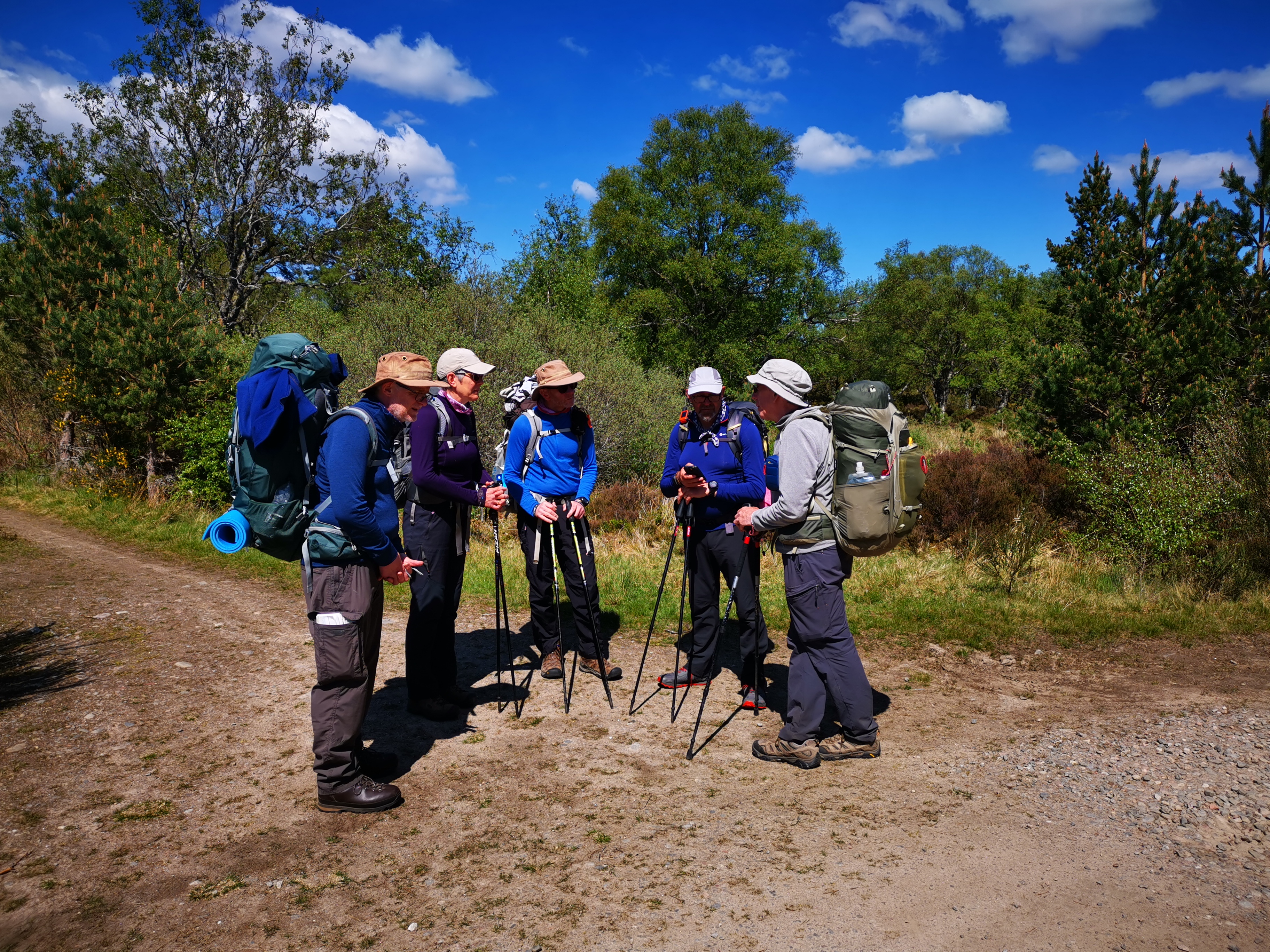




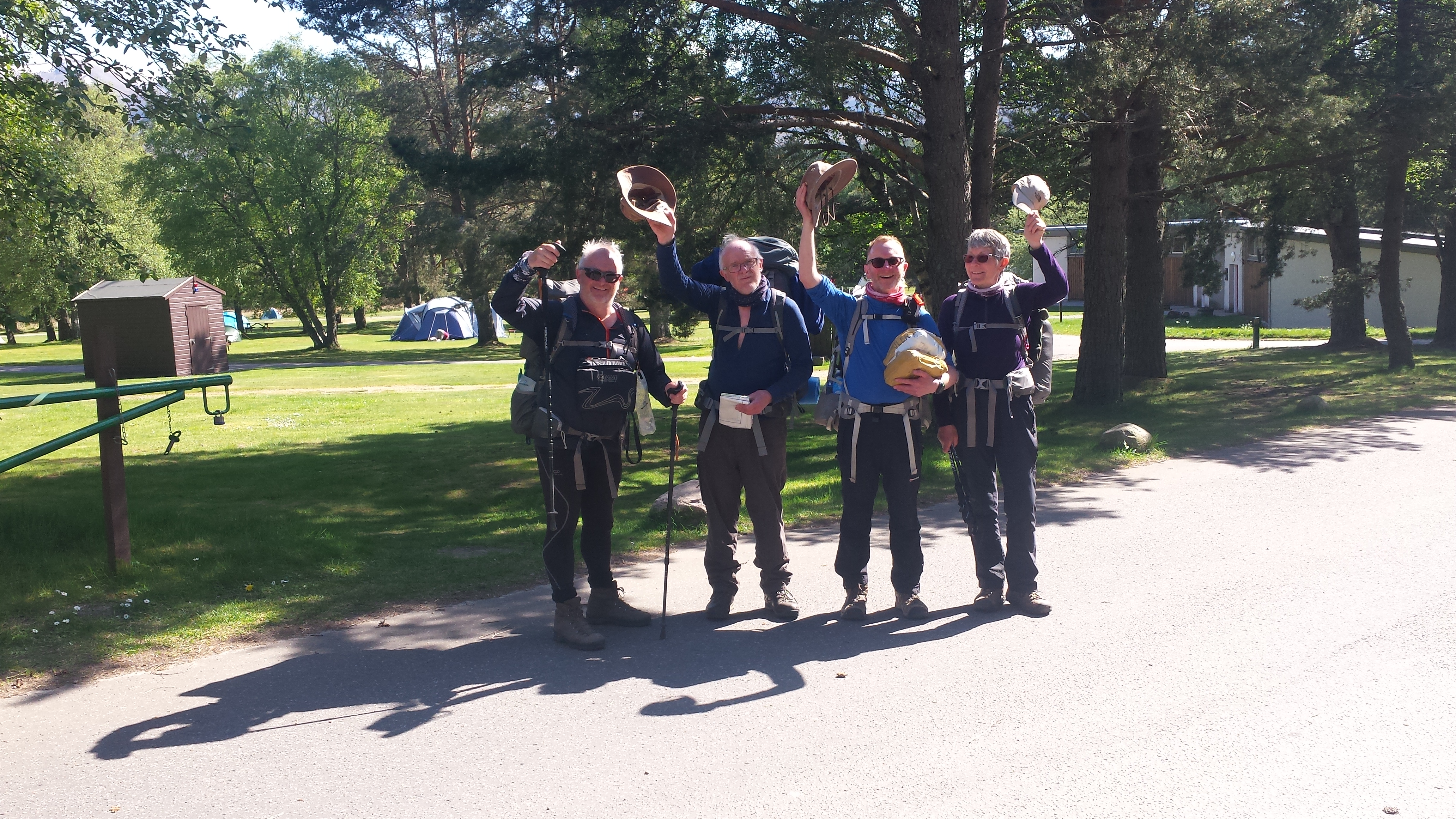





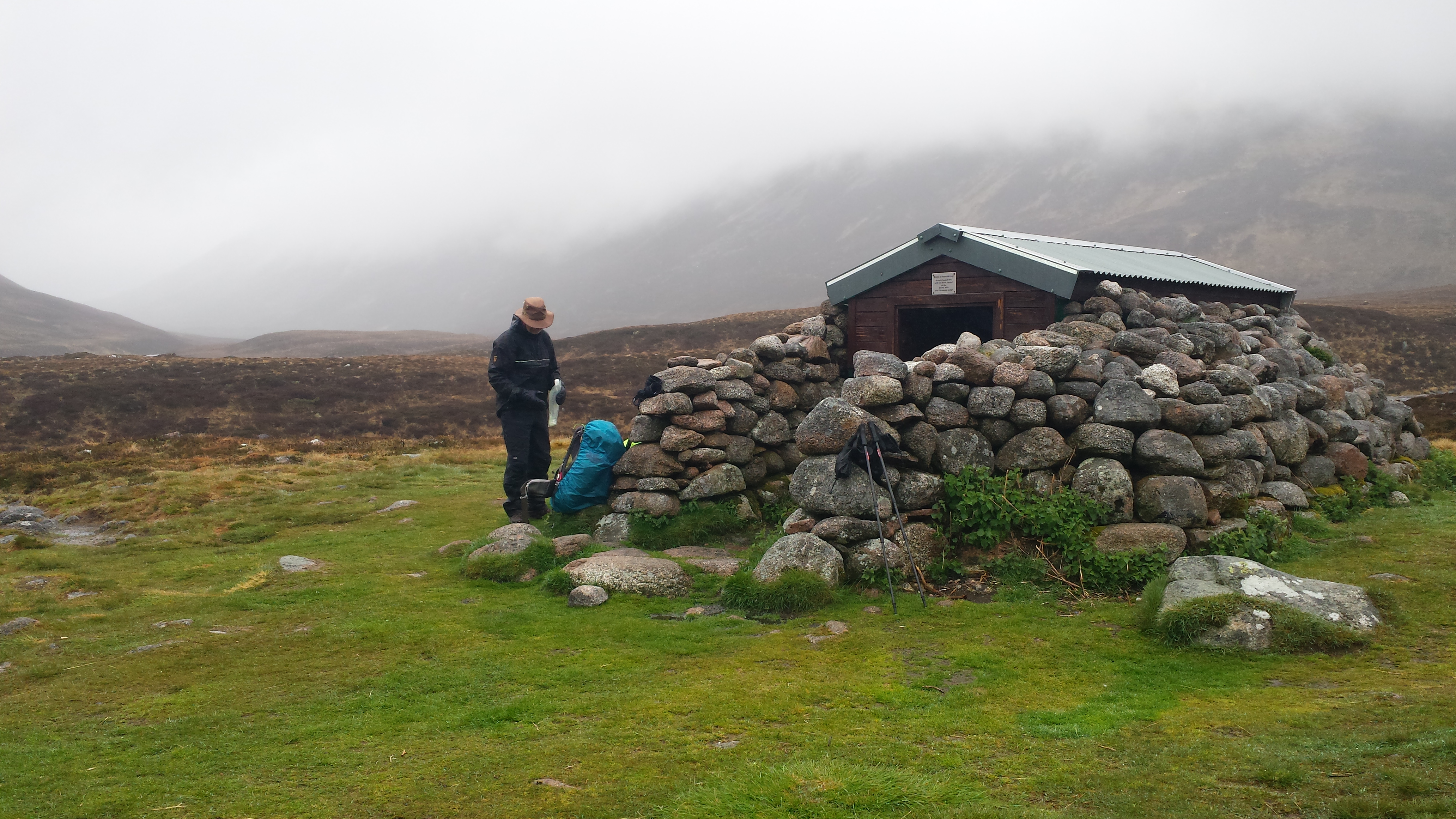


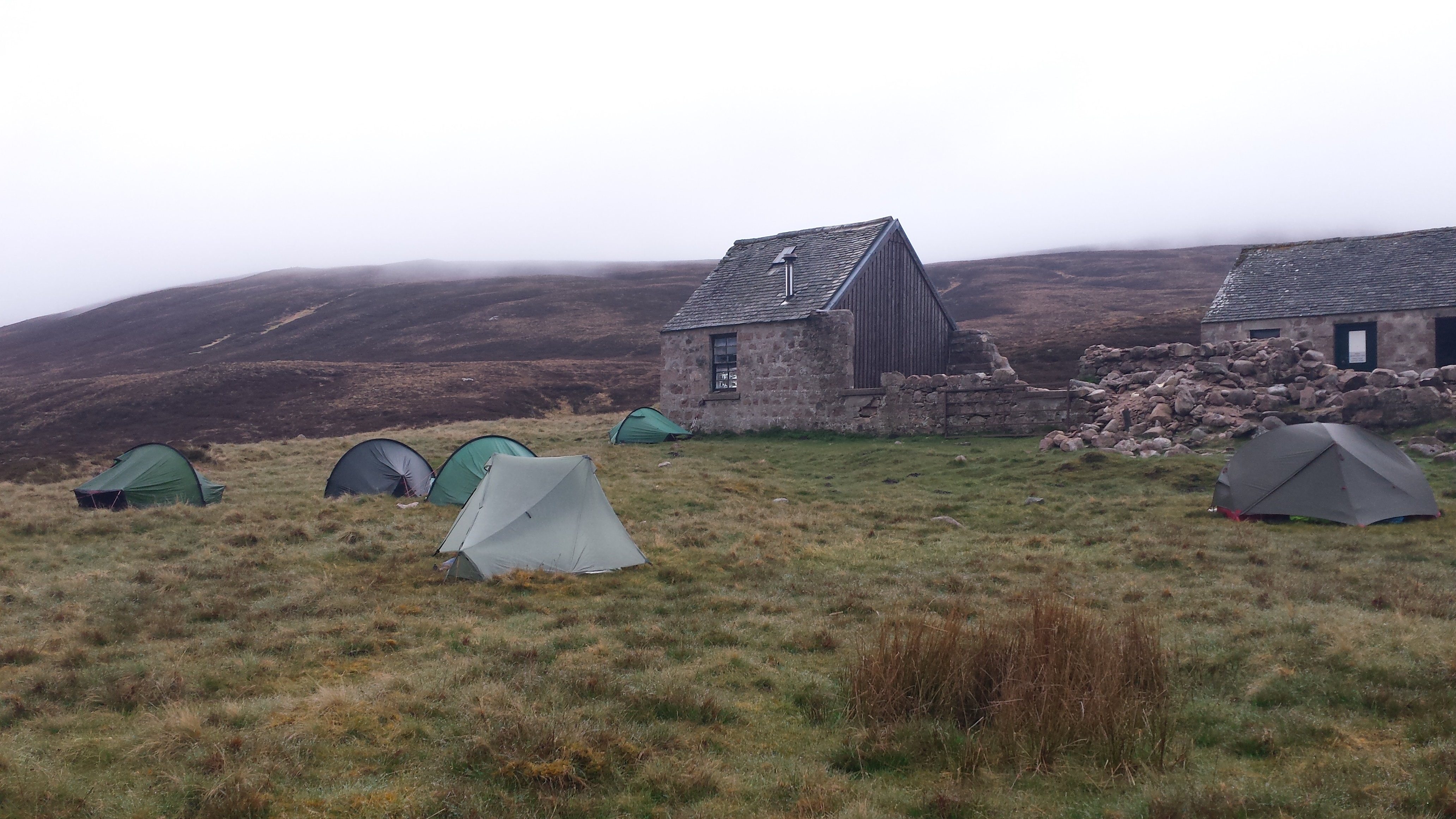
 Our tents pitched just before sunset. Photo: Dave Glenn Hewitt
Our tents pitched just before sunset. Photo: Dave Glenn Hewitt Hydro pipeline with newer sections added. Photo: Dave Glenn Hewitt
Hydro pipeline with newer sections added. Photo: Dave Glenn Hewitt
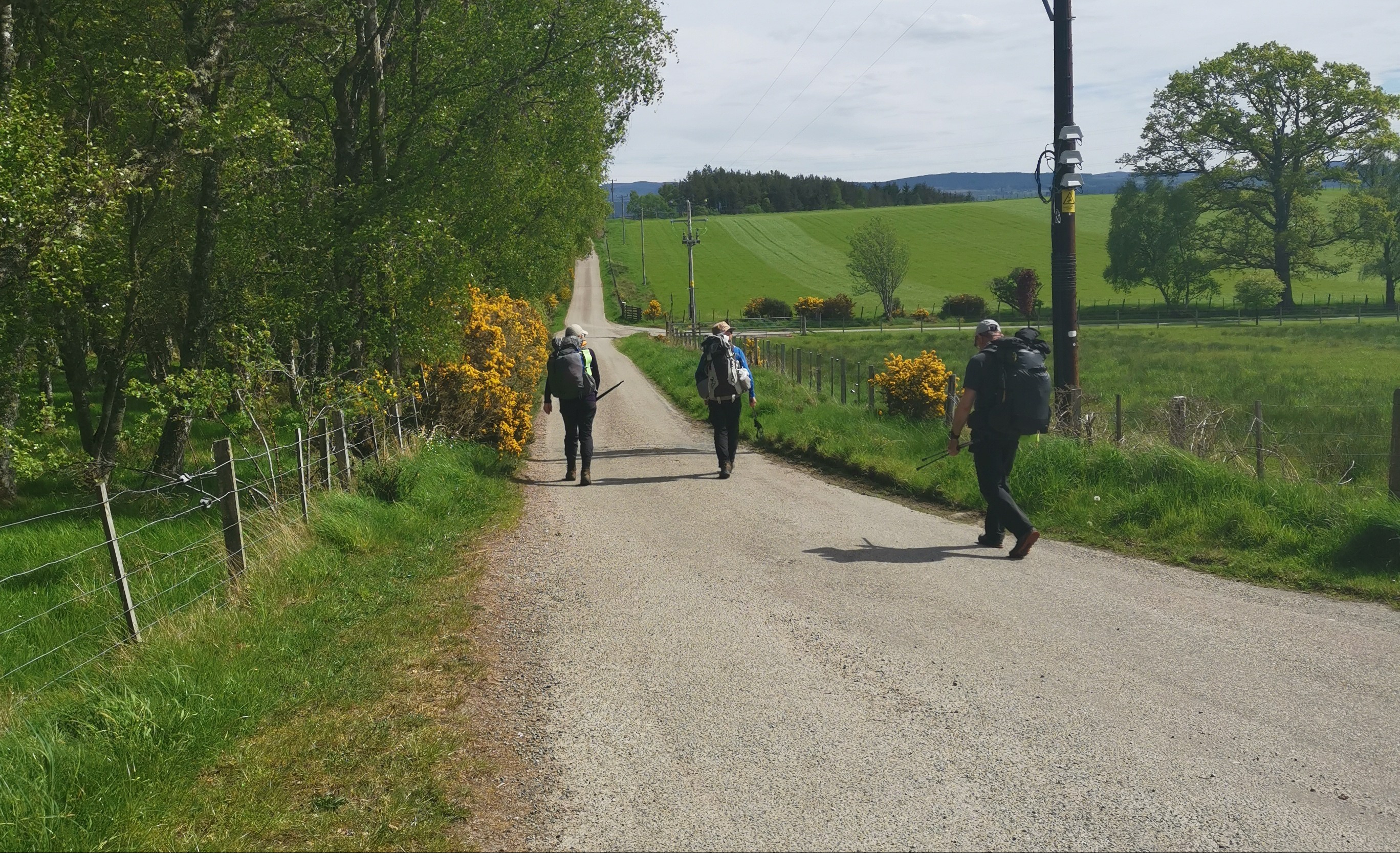
 Stopping for tea
Stopping for tea  Sleeping bag lofting in the evening sun in our secluded forest pitch.
Sleeping bag lofting in the evening sun in our secluded forest pitch. On The Great Glen Way heading for Inverness.
On The Great Glen Way heading for Inverness. 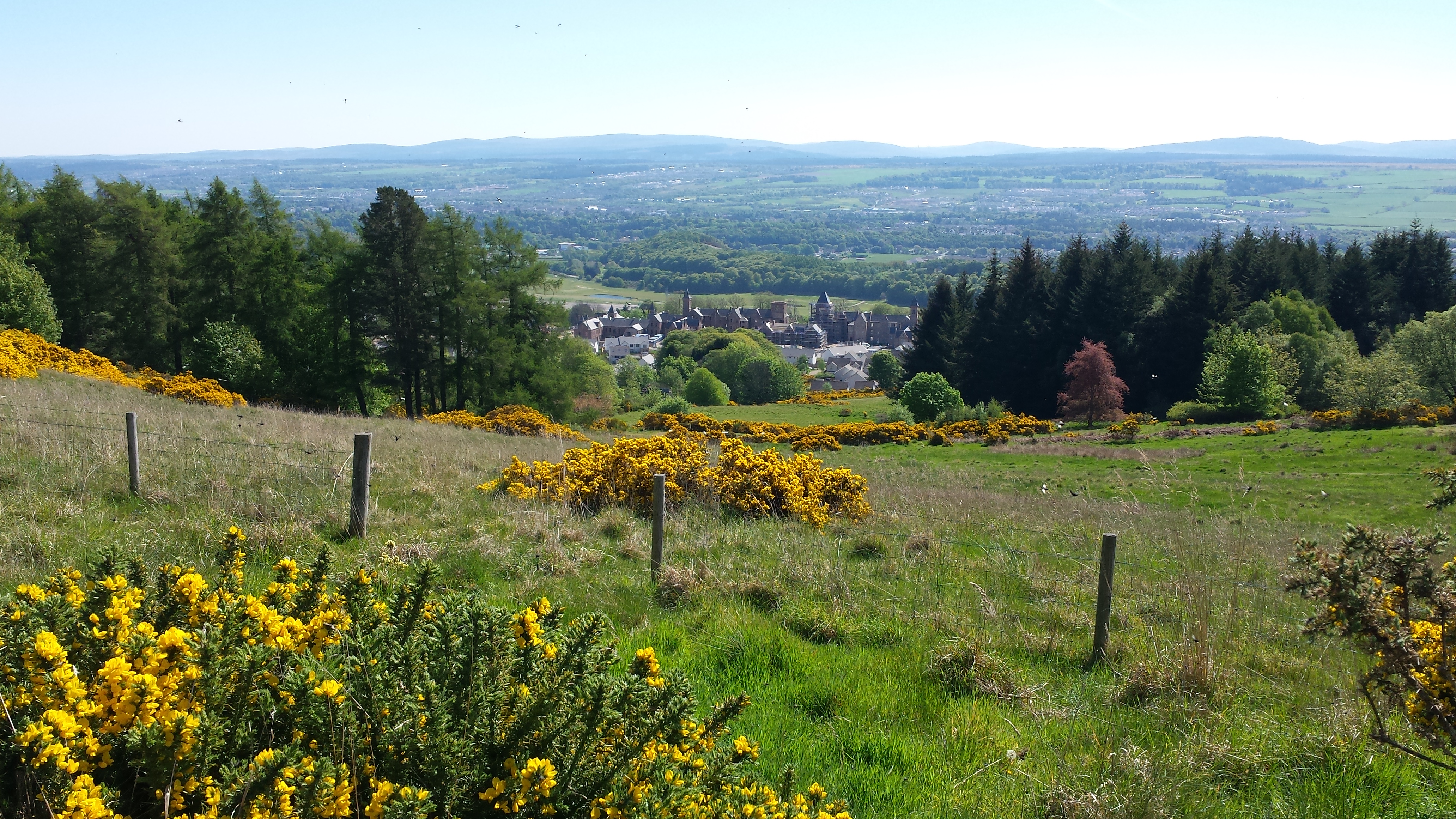 Inverness looms before us. The mock-baronial apartment complex in the centre.
Inverness looms before us. The mock-baronial apartment complex in the centre.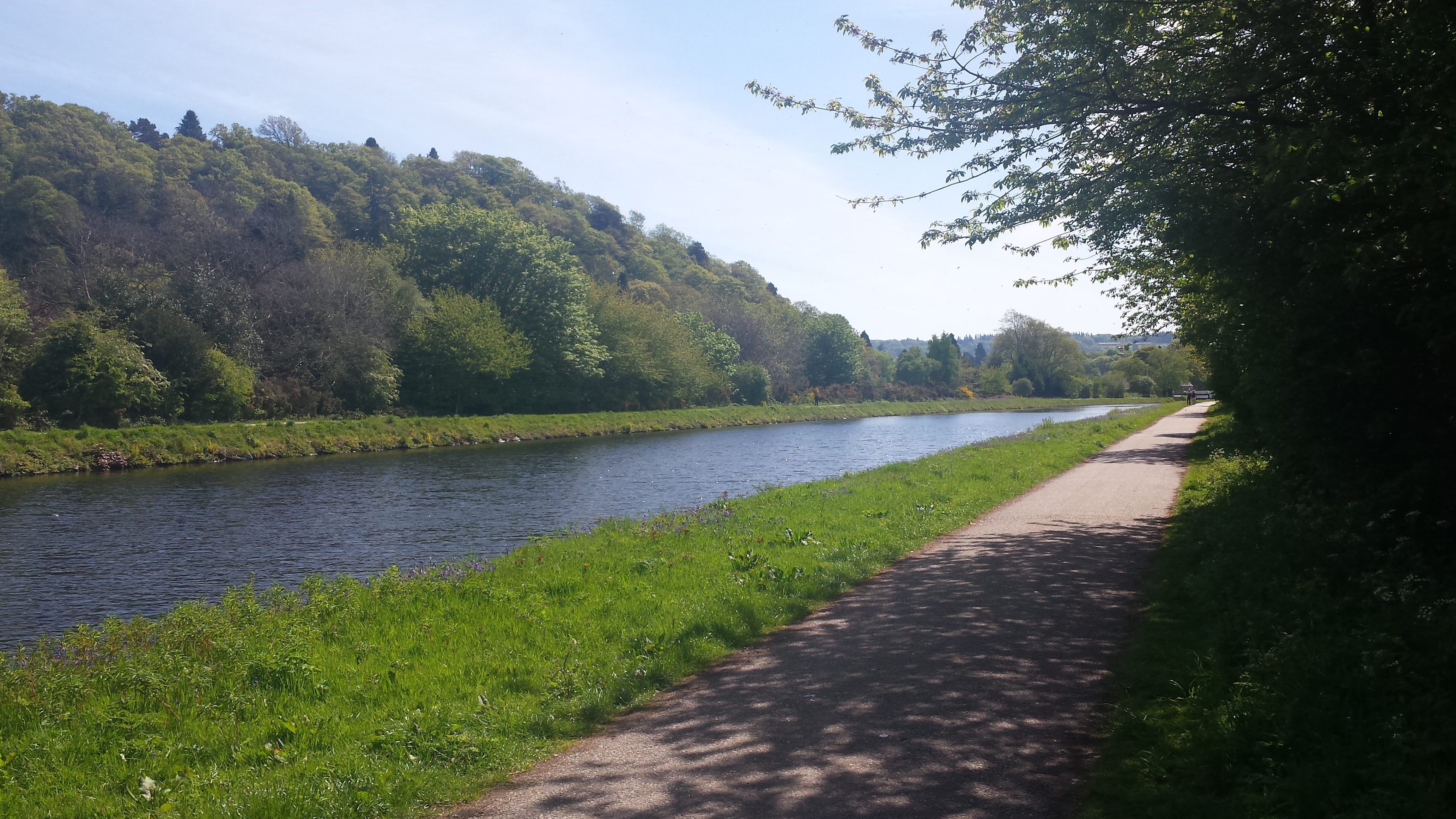

 The Caledonian Canal. The river Ness and a take on Nessie from a fallen tree in the park.
The Caledonian Canal. The river Ness and a take on Nessie from a fallen tree in the park.
 Auchnahillin Holiday Park campsite.
Auchnahillin Holiday Park campsite. 
 A friendly white goat. Loch Moy and the Isle of Moy where the remains of the original laird’s house still stand.
A friendly white goat. Loch Moy and the Isle of Moy where the remains of the original laird’s house still stand.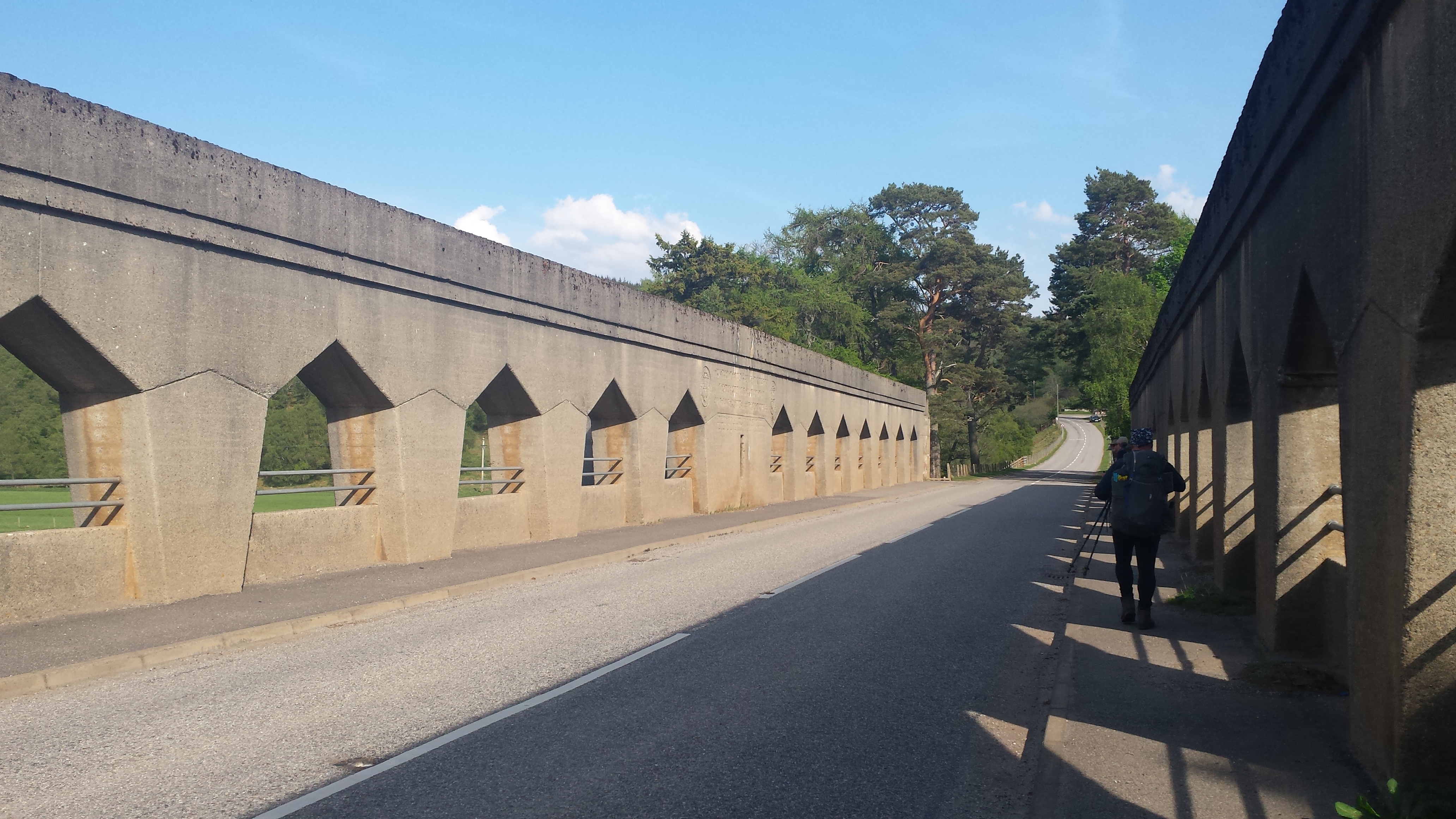
 The three Findhorn bridges. The Owen Williams bridge in the foreground. The railway and new A9 road bridges in the distance. Arch photo: Dave Glenn Hewitt
The three Findhorn bridges. The Owen Williams bridge in the foreground. The railway and new A9 road bridges in the distance. Arch photo: Dave Glenn Hewitt
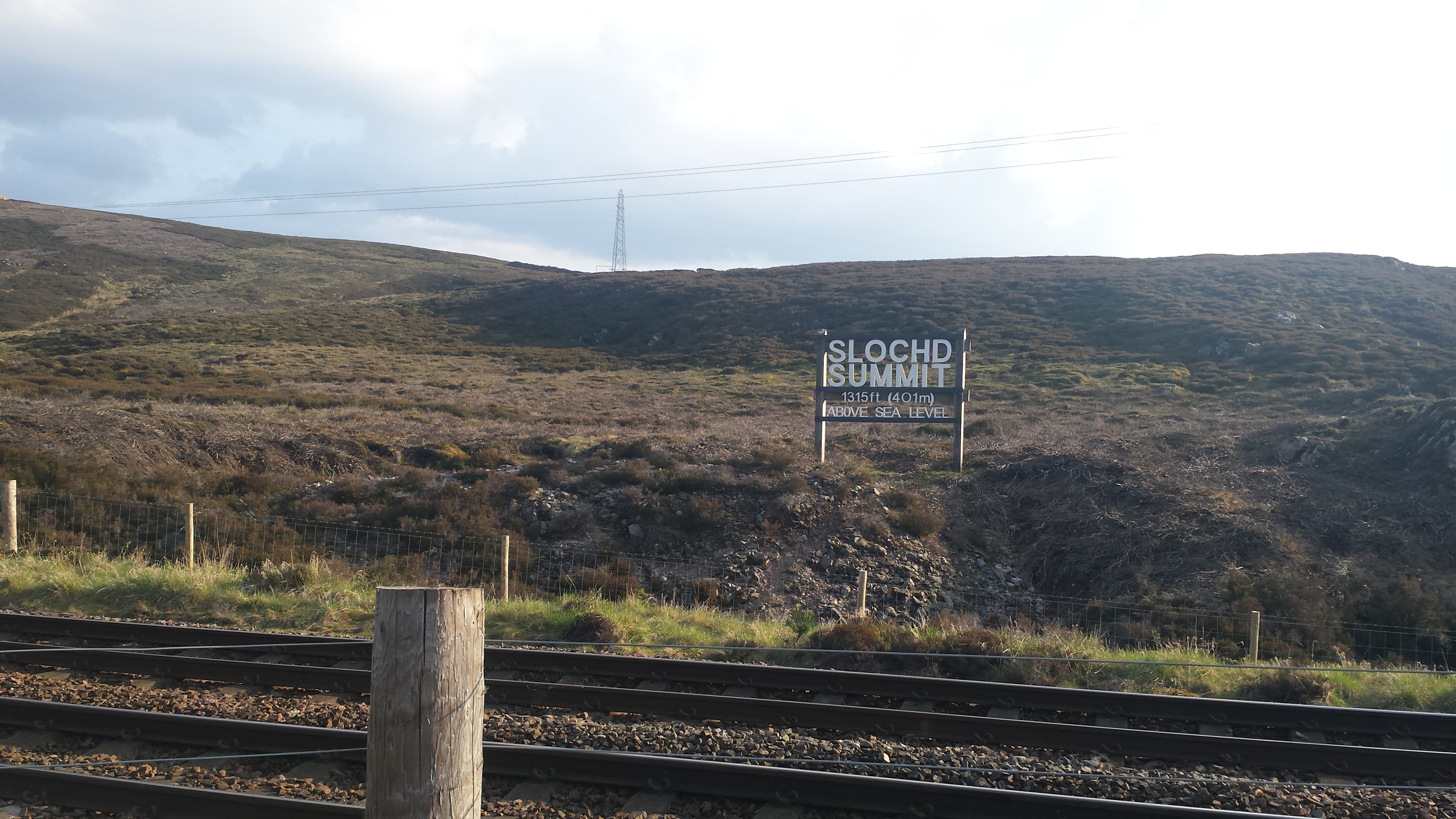
 Entering the Cairngorms National Park
Entering the Cairngorms National Park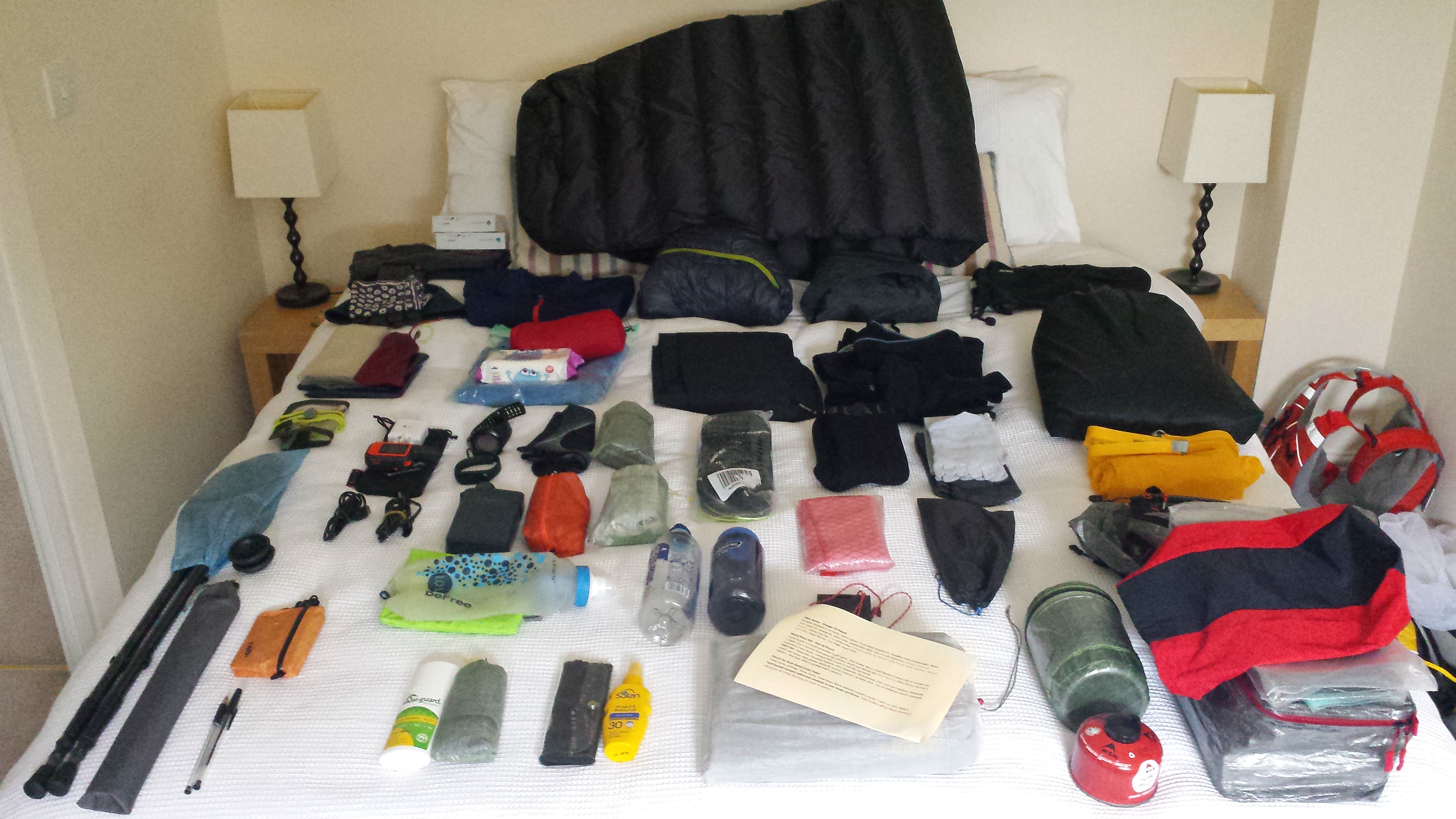 There were a couple of items that didn’t get into the bag.
There were a couple of items that didn’t get into the bag. Tread Lite Gear Cuben pods for food, clothing, misc items and stove – brilliant!
Tread Lite Gear Cuben pods for food, clothing, misc items and stove – brilliant! Gossamer Gear Silverback 55 all packed and Altra Lone Peak 4, ready to go.
Gossamer Gear Silverback 55 all packed and Altra Lone Peak 4, ready to go.
